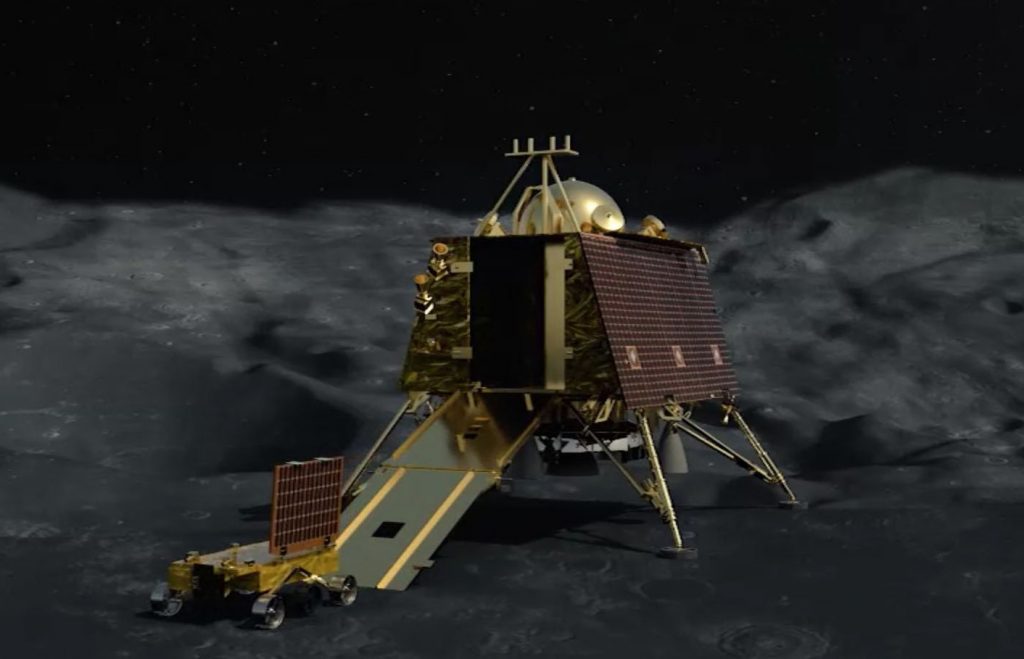Bangalore: The Indian Space Research Organisation (ISRO) is racing against time to spring ‘Vikram’ back to life and salvage the lander-rover part of the ‘Chandrayaan-2’ mission.
The lander ‘Vikram’, with rover ‘Pragyan’ tucked inside it, lost communication with the ground stations during its final descent, just 2.1 kms above the lunar surface, minutes before the planned soft-landing in the early hours of Saturday. Meanwhile ISRO said Sunday that ‘Vikram’ had a ‘hard-landing’.
The space agency again confirmed Tuesday that the lander has been located on the lunar surface by the on-board cameras of the Chandrayaan-2 orbiter which is circling the moon in its intended orbit.
“All possible efforts are being made to establish communication with (the) lander,” ISRO further said in a tweet.
A senior ISRO official associated with the mission said: “The images from the orbiter camera showed that Vikram is in single piece lying on the lunar surface; not broken into pieces. It is in a tilted position, not on its four legs, as usual.” The official who spoke on condition of anonymity said: “It’s not upside down. It’s lying on its side.”
Another ISRO official informed that ‘Vikram’ hit the lunar surface at a place about 500 metres away from where it was originally planned to touch-down. But again no official confirmation has come from ISRO on this issue.
Sources said an ISRO team is trying to see if they can reorient the antennas of the lander in such a way that communication can be restored. “Efforts are going on at a feverish pace,” they said.
According to a senior ISRO official, orientation may have been lost during the final descent when velocity was reduced, due ‘sensor or on-board software or computer anomaly’. “A committee is looking into what has gone wrong. They will come out with answers soon,” asserted this official.
Meanwhile, flawless and precise launch and efficient management of the Chandrayaan-2 mission – till ‘Vikram’ lost communication with ground stations – has paid rich dividends to the ISRO on the orbiter front.
The 2,379 kg orbiter whose mission life was designed to be one year would now be able function for almost seven years, informed an official of the space agency.
PTI
